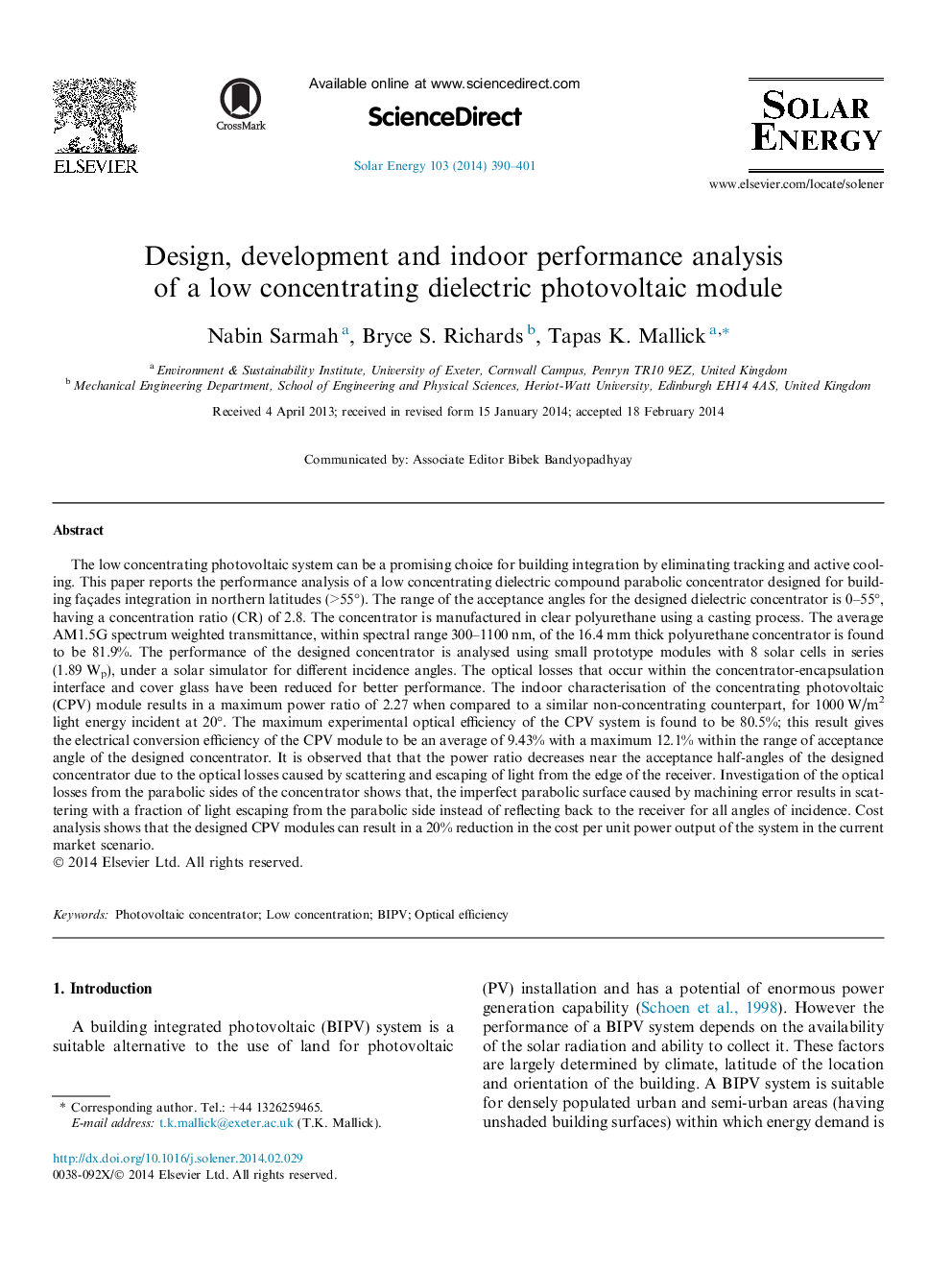| کد مقاله | کد نشریه | سال انتشار | مقاله انگلیسی | نسخه تمام متن |
|---|---|---|---|---|
| 7938358 | 1513115 | 2014 | 12 صفحه PDF | دانلود رایگان |
عنوان انگلیسی مقاله ISI
Design, development and indoor performance analysis of a low concentrating dielectric photovoltaic module
ترجمه فارسی عنوان
طراحی، توسعه و تجزیه و تحلیل عملکرد داخلی یک ماژول فتوولتائیک دی الکتریک با تمرکز بالا
دانلود مقاله + سفارش ترجمه
دانلود مقاله ISI انگلیسی
رایگان برای ایرانیان
کلمات کلیدی
موضوعات مرتبط
مهندسی و علوم پایه
مهندسی انرژی
انرژی های تجدید پذیر، توسعه پایدار و محیط زیست
چکیده انگلیسی
The low concentrating photovoltaic system can be a promising choice for building integration by eliminating tracking and active cooling. This paper reports the performance analysis of a low concentrating dielectric compound parabolic concentrator designed for building façades integration in northern latitudes (>55°). The range of the acceptance angles for the designed dielectric concentrator is 0-55°, having a concentration ratio (CR) of 2.8. The concentrator is manufactured in clear polyurethane using a casting process. The average AM1.5G spectrum weighted transmittance, within spectral range 300-1100 nm, of the 16.4 mm thick polyurethane concentrator is found to be 81.9%. The performance of the designed concentrator is analysed using small prototype modules with 8 solar cells in series (1.89 Wp), under a solar simulator for different incidence angles. The optical losses that occur within the concentrator-encapsulation interface and cover glass have been reduced for better performance. The indoor characterisation of the concentrating photovoltaic (CPV) module results in a maximum power ratio of 2.27 when compared to a similar non-concentrating counterpart, for 1000 W/m2 light energy incident at 20°. The maximum experimental optical efficiency of the CPV system is found to be 80.5%; this result gives the electrical conversion efficiency of the CPV module to be an average of 9.43% with a maximum 12.1% within the range of acceptance angle of the designed concentrator. It is observed that that the power ratio decreases near the acceptance half-angles of the designed concentrator due to the optical losses caused by scattering and escaping of light from the edge of the receiver. Investigation of the optical losses from the parabolic sides of the concentrator shows that, the imperfect parabolic surface caused by machining error results in scattering with a fraction of light escaping from the parabolic side instead of reflecting back to the receiver for all angles of incidence. Cost analysis shows that the designed CPV modules can result in a 20% reduction in the cost per unit power output of the system in the current market scenario.
ناشر
Database: Elsevier - ScienceDirect (ساینس دایرکت)
Journal: Solar Energy - Volume 103, May 2014, Pages 390-401
Journal: Solar Energy - Volume 103, May 2014, Pages 390-401
نویسندگان
Nabin Sarmah, Bryce S. Richards, Tapas K. Mallick,
